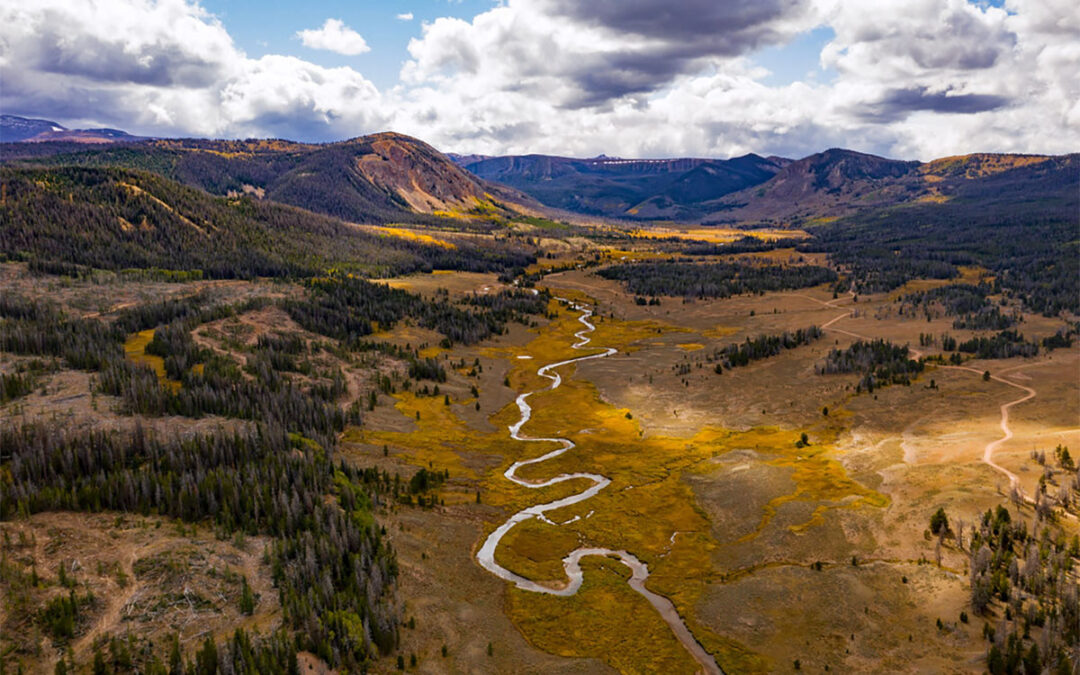Photo: USFS
The great news is the Ashley National Forest has been saved from a “landscape scale” deforestation plan in which the Forest Service planned to bulldoze in skid trails to log and burn up to 147,000 acres (230 square miles!) of Inventoried Roadless Areas. But when faced with the lawsuit brought by the Alliance for the Wild Rockies, Yellowstone to Uintas Connection, Center for Biological and Native Ecosystems Council, the Forest Service decided to pull the project rather than lose in federal court.
The Ashley N.F., located about 70 miles east of Salt Lake City, contains both the High Uintas Wilderness Area and King’s Peak, Utah’s tallest mountain. Although facetiously called a “restoration project,” the Forest Service proposal blatantly violatedthe Federal Roadless Area Conservation Rule, which prohibits the cutting, sale or removal of trees inside Inventoried Roadless Areas except in very limited circumstances.
While small trees can be cut to improve threatened, endangered, proposed or sensitive species ecosystems and habitat, wholesale commercial logging is prohibited. Not only didn’t the agency limit the logging to small trees, it did just the opposite and proposed clearcutting the roadless area for the benefit of the timber industry.
Instead of improving habitat for declining species, the plan would have destroyed habitat for Western forest birds. Five species, including the Rufous Hummingbird, have lost more than half of their population since 1970 and 71 different bird species live in and rely on the meadow-aspen-fir-spruce forests of northern Utah. Lynx and wolverine, both of which are listed as “threatened” under the Endangered Species Act, also rely on the healthy forest ecosystems the government is legally mandated to protect for these declining species.
A valid restoration alternative would entail removing or significantly reducing livestock grazing leases since cattle browse on aspen stands, which are declining throughout the Intermountain west. The aspen cannot regenerate naturally because cattle prefer the young aspen shoots, so they never get a chance to mature.
Yet the Forest Service did not consider any alternative that would do this. Instead their decision called for commercial logging and clearcutting big conifers and aspen stands, which the agency contended was to stimulate aspen sprouting. But destroying forests to save them has been scientifically rejected. Obviously it doesn’t make sense to require aspen to use limited and diminishing resources, such as water, to regenerate sprouts that end up in cattle’s stomachs.
The foundational purpose of the National Environmental Policy Act is to mandate that the government “look before you leap“and fully disclose the potential environmental impacts. The law also requires giving the public the opportunity for review, comment, and objection.
But the Forest Service refused to tell the public what types of logging would have occurred within Inventoried Roadless Areas, thus making it impossible to even understand the impacts of the proposal. When our attorneys told the Forest Service they were violating the Roadless Conservation Rule and the National Environmental Policy Act, they ignored us — at least until their attorneys apparently told the agency it was going to lose in court.
The Forest Service needs to be reminded that national forests belong to the American people, not the Forest Service, and not the timber and cattle industries. Please email or call Randy Moore, the Chief of the Forest Service, and tell him to quit logging Inventoried Roadless Areas as well as reminding him that the agency, just like the rest of us, has to follow the law. His email address is Randy.Moore@USDA.gov. His phone number is (202) 205-8439.
Mike Garrity is the Executive Director of the Alliance for the Wild Rockies
